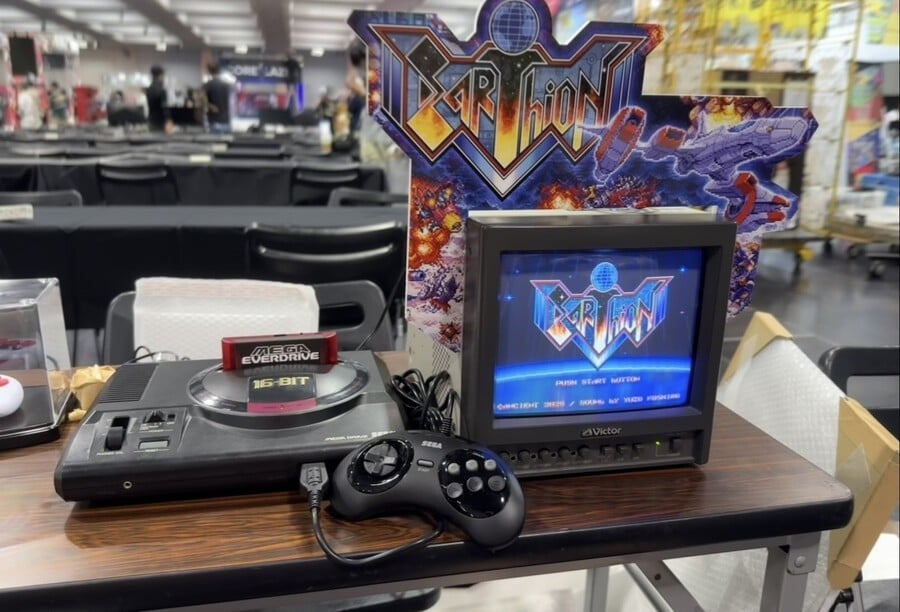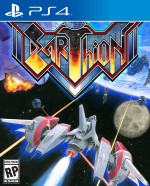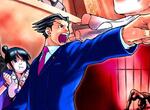
The Mega Drive / Genesis certainly hasn't been short of new software recently, which is remarkable for the console that saw its debut all the way back in 1988. However, few modern projects for Sega's 16-bit system have generated the frenzied level of interest that Earthion has, and a lot of that is down to the person behind it.
Yuzo Koshiro is a name that will need no introduction to console players who grew up in the glory days of the SNES and Mega Drive console war. He gained international fame thanks to his amazing soundtracks for titles such as ActRaiser, Revenge of Shinobi and Streets of Rage and has written music for countless games since then, including Etrian Odyssey, Castlevania: Portrait of Ruin and Sol Cresta. He also runs the small Japanese studio Ancient, which he established in 1990 along with his mother and sister.
Koshiro, then, has been straddling the line between video game music and video game production for quite some time; Ancient's first project was the critically acclaimed Master System / Game Gear version of Sonic the Hedgehog, and the company would follow that up with Streets of Rage 2, which was developed in collaboration with Sega itself. Ancient's other releases include Beyond Oasis / Story of Thor (1995), Car Battler Joe (2001), Protect Me Knight (2010), Gotta Protectors: Cart Of Darkness (2019) and Royal Anapoko Academy (2022), but it's fair to argue that Earthion is the studio's most talked-about release in some time – despite the fact that it was designed with a commercially defunct, 37-year-old console in mind.

"The Mega Drive is my favourite console of all time," replies Yuzo Koshiro when I ask him why he picked Sega's most successful home system for this project. "I’m proud of the many classic titles and soundtracks I worked on during that era, but I was also really curious to see what could be achieved using today’s much more advanced development tools. That curiosity was my main motivation at the start."
This is certainly believable; it's hard to imagine many developers are getting rich off producing new games for the Mega Drive. None of this dissuaded Koshiro, who says he "wasn't thinking much about the commercial side in the beginning," before admitting that the public response surprised him. "When I shared a prototype on X, the reaction was far greater than I ever expected. That convinced me to take the project seriously and develop it as a full game. Limited Run Games offered support on the funding side, which made it possible to commit to the development properly. Working on it again reminded me just how incredible the Mega Drive really is."
Koshiro's partner on Earthion is the insanely talented Makoto Wada, who also worked on Gotta Protectors: Cart of Darkness and Royal Anapoko Academy and has been with Ancient for almost 20 years. While Koshiro is responsible for producing the game and elements of its design – as well as its music, of course – Wada is the director, planner and lead pixel artist, and is ultimately responsible for making the manic on-screen action possible.

"The opportunity came about when Koshiro, the President of Ancient, asked me about making a shooter," Wada tells me. "He said he really wanted to create a shooter for the past decade. Originally, we thought about developing something for the Famicom, but Yuzo Koshiro is known for his work on the Mega Drive, and I managed to create a test prototype on the Mega Drive, so it was a smooth decision."
What's surprising about this is that Wada himself confesses that the genre isn't one of its strong suits. "I’m actually not that good at shooters. However, I played a lot of Darius in front of others, so I leaned on that for inspiration. In Earthion, you can recover health automatically even after sustaining damage. In Darius, by acquiring items, you gain defensive points via its shield system. Both games allow you to have highly defensive shields. I suppose the two games might feel similar to each other." When I ask Koshiro about what games influenced him when approaching Earthion, he cites Konami's Gradius series. The foundations are solid, then.
While people have been creating Mega Drive games for almost 40 years, the tools have changed over the decades. Stéphane Dallongeville's amazing SGDK offers the kind of power and accessibility developers of the '90s could only dream of, and Ancient leveraged it to create Earthion.

"This was my first time developing for the Mega Drive, so I can’t really make an accurate comparison to developing back then," admits Wada. "However, I felt that the accuracy of the compilers was higher than I expected. I wrote the code while keeping in mind the conversions to assembly, but I was surprised to find out that paying too much attention to it would also cause slowdown. SGDK was very easy to use, thanks to its resource management and well-designed bank conversion system."
Likewise, the tools used to create audio have evolved over the years, and Koshiro – an undisputed master of getting the best out of the Mega Drive's Yamaha YM2612 sound chip, as we've already established – made use of Ian Karlsson's MDSDRV sound driver for Earthion, cooking up some of the best music of his storied career in the process.
"At first, I was planning to use the XGM driver, but we ran into various issues integrating it into the game," admits Koshiro. "While I was struggling with that, the development team at exA-Arcadia, who’s working on the arcade version, introduced me to Ian Karlsson’s MDSDRV and the ‘mmlgui’ tool. The documentation mentioned that it was inspired by MUCOM88, which I had developed back in the day, and the programming language felt very familiar. So it was easy for me to pick up. But the system itself has evolved a lot since then; it allowed me to create sounds that would’ve been impossible with MUCOM88."

Back when the Mega Drive was in its prime, shmups of this type were incredibly popular both in arcades and at home, but today, the genre is perhaps seen as a little more niche by most mainstream gamers. This, in itself, presented a quandary for the two-man team at Ancient. "Shooters are a genre in which there is a tremendous gap between skilled and unskilled players," says Wada. "I wanted to make Earthion so that it would satisfy both kinds of players. That’s why the game contains the auto-regenerative shield and password system."
Wada wasn't just fighting against the expectations of the genre with Earthion, however; the limitations of the host platform also made development tricky. "The most time-consuming part was the stage scenes," he explains. "VRAM is kind of like a puzzle, so I need to run many calculations to see what kind of addresses would be needed for the visuals I wanted to show on screen. Due to my experience, a lot of the implementations produced buggy results, and I needed to come up with ideas on how to resolve these issues each time they came up."
Earthion's tiny team also threw up predictable bottlenecks, and the game was subject to delays as a result. "Finishing Earthion with just the two of us was definitely a challenge. It took about two years to complete, and we faced some difficulties with funding along the way," Koshiro says. "But Makoto Wada has been developing games at Ancient for nearly 20 years, and he’s also a longtime gamer friend of mine. Because we know each other so well, we were naturally aligned in what we wanted to create, what we valued, and how we approached development. That strong mutual understanding allowed us to move forward without hesitation or confusion. It made the process much smoother, and I’m really grateful for that."

While the Mega Drive is the game's main platform, it has launched first on Steam, with Switch, Xbox and PlayStation consoles getting a digital release in September. The Mega Drive release won't come until 2026, a move which Koshiro explains is down to the desire to make sure the final, cartridge-based version of the game is entirely free from bugs. Earthion is coming to arcades, and Koshiro reveals this edition will be slightly different from the home versions, which are all based on the Mega Drive's capabilities.
"Creating an arcade game has been a longtime dream of mine," he says. "While we were developing Earthion, I was approached by Eric Chung, the CEO of exA-Arcadia, who expressed interest in releasing an arcade version. I really connected with the concept of the exclusive EXA Mode, so I decided to go ahead with it. I had a chance to play it myself at Taito Akihabara Hey, and the player reactions and earnings were both very positive. It was a great experience. The EXA version runs on a system that’s much more powerful than the Mega Drive, so it can’t be ported directly to home consoles. At this time, we don’t have any plans to bring that version to home platforms."
Produced under Ancient's YKGGG sub-label, Earthion is hopefully the first in a long line of faux-retro releases from Koshiro and Wada. "I definitely want to continue making retro-style games under the YKGGG label, and most likely our next title will also be for the Mega Drive. We haven’t decided on the genre yet, but we’re already thinking about what could come next. Stay tuned, and please look forward to it."
That's perhaps looking too far into the future, however; Earthion has yet to arrive on all of its intended platforms, and Ancient's current focus is rebalancing the game based on user feedback and eliminating any bugs. Even so, there's time to reflect on the project's success.
"More than anything, I’m proud that we were able to release a fully developed side-scrolling shooter for the Mega Drive in this day and age," Koshiro concludes. "And not just for the Mega Drive, but also for modern consoles with multilingual support. It’s no easy feat to take a project of this scale, which could be considered indie-sized, and bring it to this level of completion and polish. I’m truly grateful to everyone who supported and contributed to making it happen."









